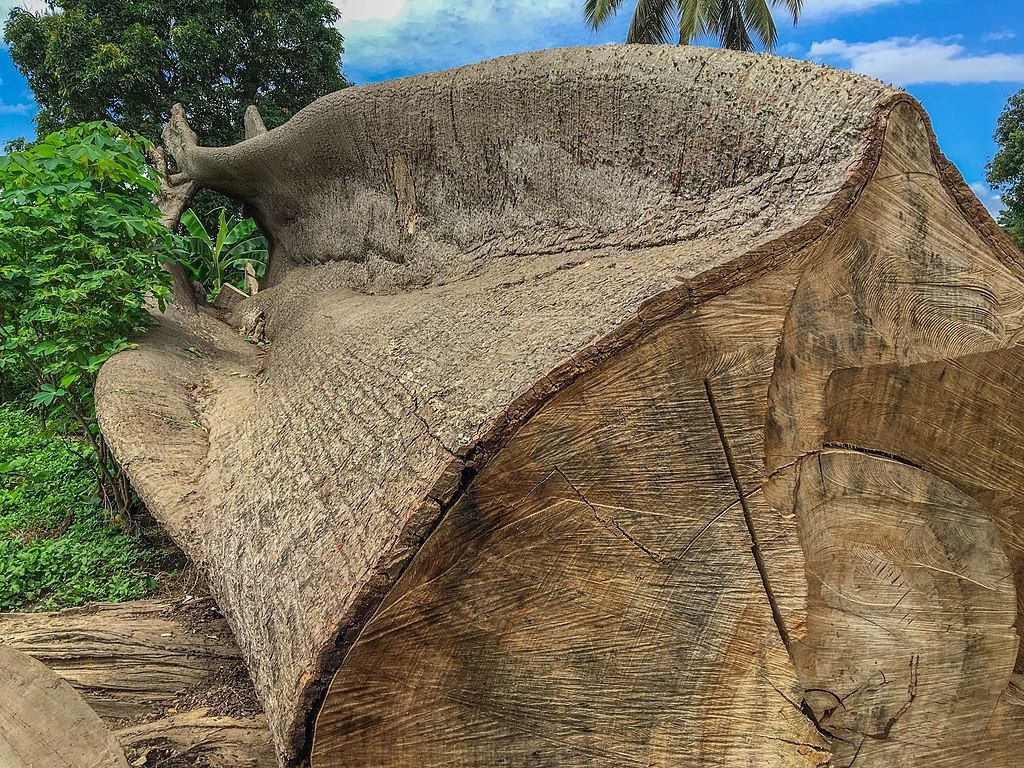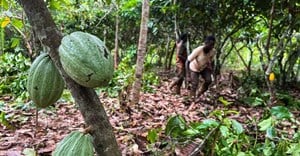Deforestation in tropical Africa is not as bad as previously thought

Tropical forests are home to an exceptional diversity of flora and fauna, and they represent one of the largest terrestrial carbon stocks. This means that tropical deforestation can release a huge amount of carbon into the atmosphere, contributing to climate change. As a result, tropical deforestation had been closely monitored for the past decades. The most common way of doing this has been with the use of satellite images.
The results showed that deforestation was raging all over tropical areas during the 1980s but started to reduce in the 1990s and 2000s, except in tropical Asia.
Some studies have even suggested that during the past century (since 1900) Africa lost 55% of its tropical forests, Asia 35% and Amazonia 11%.
But these figures weren’t calculated from a baseline of forest extent in 1900. Rather, they were calculated by using the outputs of models fed with current climate data. This means that they are not very accurate.
In a recent study we show that the loss of forests in tropical Africa in the past century is far less severe than previously estimated. Our analysis shows that forests have, on average, shrunk by 21.7%.
But deforestation has not been homogeneous. Some areas have been hit much worse than others: for example, West and East African forests have been reduced by as much as 80% to 90%.
And, in a particularly surprising result, we found that in some areas of Central Africa, forests have in fact encroached onto savannas, resulting in a net forest expansion, although we don’t yet know what the causes are.
The results of our study represent good news because deforestation rates are not as bad as previously thought. This also has major implications for conservation efforts in both forests and savannas.
Overturning old assumptions
Identifying areas that have been deforested is very important because it can serve as a basis for carbon mitigation strategies and conservation planning. For example, planting trees helps trap carbon from the atmosphere and can help fight ongoing climate change. But trees should be planted in deforested areas, not in places that have long been savannas.
In Africa huge areas of savannas are being targeted for planting trees because they were identified as deforested areas. But ecologists – now backed by our research – are warning that this may not be the case.
A new body of literature is developing around the idea that natural disturbances play a strong role in determining natural vegetation, and shows that earlier studies incorrectly labelled ancient savannas as newly deforested regions. These earlier studies suggested that forests were more widespread in Africa in the past, which explains the previous very high deforestation rates.
Our research paints a different picture and shows that these previous analyses have been incorrect.
New spatial modelling
Our conclusions are different because we relied on two sources of information that allowed us to come up with a much more accurate account:
- paleo-environmental indicators, such as plant remains, preserved in lake sediments or soils, to reconstruct past vegetation; and
- historical accounts and maps.
Using paleo-environmental indicators was a real challenge. This was because paleodata are relatively rare in Africa, especially in West Africa and the Congo Basin and particularly in the Democratic Republic of Congo. This is due to a paucity of sedimentary archives, and sometimes to access issues to study sites because of political instability.
To address this scarcity problem, we also included information from historical maps and documents dating back to around 1900. These sometimes include a description of vegetation. For example, we used the map of “the great forest region” that Henry M. Stanley designed during the relief expedition of Emin Pacha (1886-1889).
By combining these data sources and using a statistical model, we were able to spatially model the forest extent in 1900 and in 2000 and to provide updated deforestation rates. We estimated that forests were not as widespread as previously thought in tropical Africa, resulting in smaller deforestation rates. We found that tropical forests have decreased by 21.7%, a figure substantially smaller than the 55% previously cited.
In contrast, when looking at local estimates of deforestation in West and East Africa, our estimates show an almost complete disappearance of forests. We estimated deforestation rates of 80% and 90% for West Africa and East Africa, respectively.
On the other hand, Central African forests have expanded by 1.4% at the expense of savannas. Once again, this pattern was not homogeneous: some areas of the Republic of Congo, the Democratic Republic of Congo and Uganda have been deforested, while areas of Central African Republic and Gabon have been afforested.
Implications
This first data-driven reconstruction of historical forest and savanna distributions at the continental scale has strong implications for savanna and forest conservation as it challenges some policies currently being pursued.
![]() For example, there is a global effort to increase the number of trees that can trap carbon. But now that an historical baseline exists, it is urgent to focus efforts in areas that have been truly deforested rather than in areas that have long been savannas. Indeed, planting forest trees in savannas can result in a decrease in biodiversity and the loss of unique ecosystems.
For example, there is a global effort to increase the number of trees that can trap carbon. But now that an historical baseline exists, it is urgent to focus efforts in areas that have been truly deforested rather than in areas that have long been savannas. Indeed, planting forest trees in savannas can result in a decrease in biodiversity and the loss of unique ecosystems.
This article was originally published on The Conversation. Read the original article.
Source: The Conversation Africa

The Conversation Africa is an independent source of news and views from the academic and research community. Its aim is to promote better understanding of current affairs and complex issues, and allow for a better quality of public discourse and conversation.
Go to: https://theconversation.com/africa






















